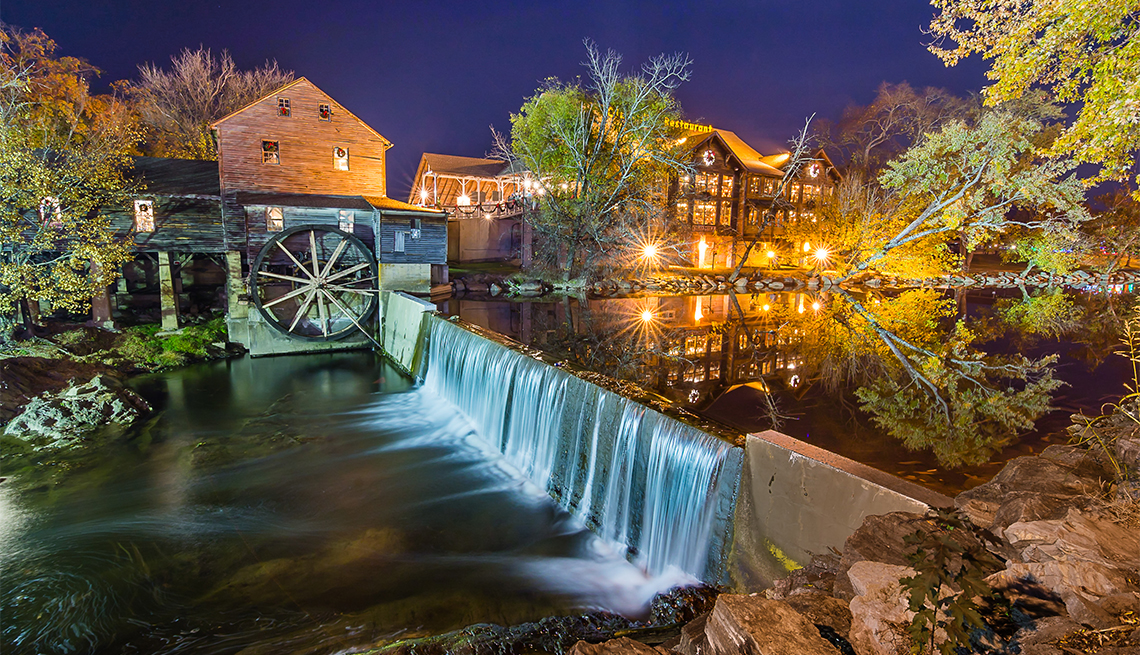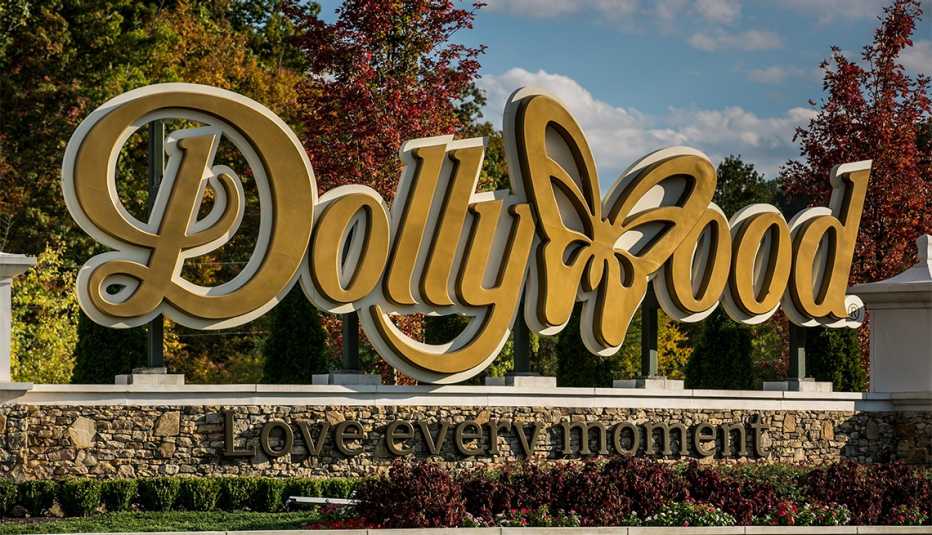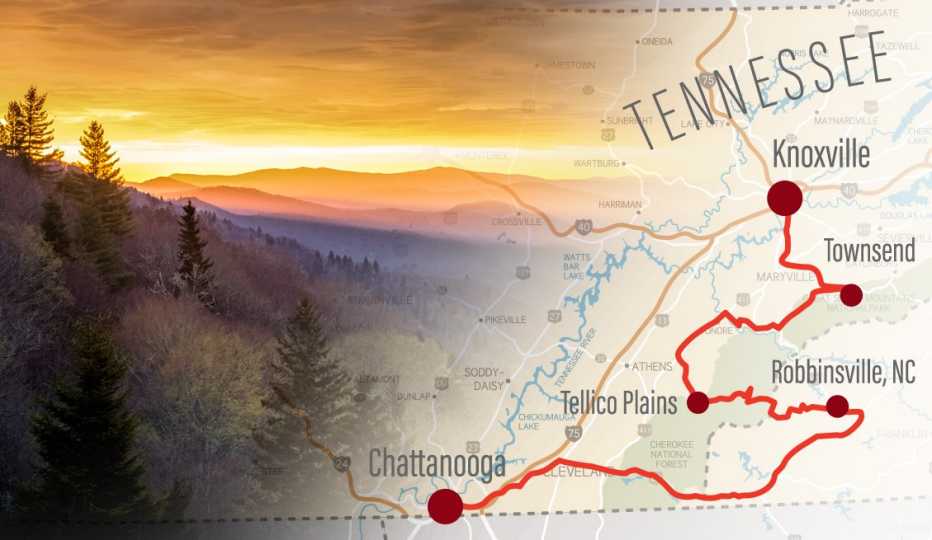AARP Hearing Center
For travel this summer, it seems, all eyes are on Gatlinburg and Pigeon Forge, Tennessee. These gateway towns to the country’s most-visited national park, Great Smoky Mountains, recently ranked in the top-three summer travel searches on Expedia (behind perennial Florida heavyweights Orlando and Destin).
That’s a high honor for the two formerly sleepy little tourist hamlets just seven miles apart, which have maintained their small-town populations (a little more than 4,000 residents in Gatlinburg and about 6,200 in Pigeon Forge) even as they have expanded over the decades into twin juggernauts of pleasures — from shopping and eating out to amusements, adventures and moonshine tasting.
Why does the world flock here? Perhaps it’s Gatlinburg’s tradition as an alpine-style village, with chalet architecture and shopping villages that look straight out of Bavaria. Or maybe it’s Pigeon Forge’s long-ago ranks of go-cart tracks and other amusements that drew road-tripping families in station wagons. Both towns have doubled down on their attractions since those early days.
In Gatlinburg, the compact downtown thrums with strolling shoppers, and its alpine branding has gone uphill — literally — to outdoor amusement zones, such as Anakeesta and SkyLift Park, overlooking the town.


In Pigeon Forge, the lure of the roadside attraction has evolved into large-scale museums with Vegas-meets-Myrtle Beach architecture — a massive shiplike Titanic Museum keeps company with an equally massive upside-down mansion housing WonderWorks, a pop-science museum for kids. And, of course, Pigeon Forge is home to the incredibly endearing Dollywood, local girl Dolly Parton’s empire of theme park, water park, resort, entertainment, food and mountain-fueled down-home fun.
Gateway towns to grandeur
To take on these towns is to dig into every type of tourist treat, but they wouldn’t exist without the very thing that brought them to life in the first place, which is their role as gateway towns. Their deepest, most resonant raison d’être is what rises just beyond them to the south: the Great Smoky Mountains, gathered up under the protected mantle of national park status since 1940.
The mountains are magical, with their heralded “smoky” mists that nestle among their ridges and cloak their verdant valleys; their myriad streams, rivers and waterfalls providing a near-soundtrack to every corner of the park and its surrounds; and their stunning variegated ridgelines changing colors throughout the seasons.
“The dramatic beauty of the peaks, their towering view scapes from below, lush growth, abundant wildlife, clear rippling streams and views from the mountaintops attract folks from all walks of life,” says Keith Watson, a former biologist with the National Park Service and the U.S. Fish and Wildlife Service who leads birding hikes throughout the area and performs traditional Appalachian music with his wife, Ruth Barber. “You can step back in time in these mountains and glimpse what life might have been like in simpler times.”
So whether you’re stepping into the myriad splendors of Great Smoky Mountains National Park or stepping out at Dollywood, enjoy that feeling of a trip back in time when you visit Gatlinburg and Pigeon Forge.
Here are some tips for planning a visit to the area.
Getting there
Both hamlets are an easy day’s drive for two-thirds of the population east of the Mississippi River, which means many visitors arrive by car. If you prefer to fly, however, McGhee Tyson Airport near Knoxville, Tennessee, is about an hour’s drive northwest. For larger airports with more flights, Atlanta to the south is about four hours away by car, and Charlotte, North Carolina, is about four hours to the east.
Getting around
Gatlinburg’s downtown streets can get congested, so smart visitors leave their cars where they’re staying and hop on the bright-orange trolleys of the free Gatlinburg Trolley System, which links major spots with the mass transit center at Ripley’s Aquarium of the Smokies. The trolley system also links to a park-and-ride lot at the Gatlinburg Welcome Center (1011 Banner Road), just outside of town.
Pigeon Forge boasts its own system of forest-green trolleys, with five routes that connect the town’s North and South Parkways, Dollywood, the Gatlinburg Welcome Center and Wears Valley Road (all routes begin and end at the trolley station on Old Mill Drive in the Old Mill District).
A note on navigation: In the national park and the surrounding areas outside of the two towns, cell service all but disappears, and navigation (and changes of plans) can be tricky! Pick up an old-fashioned paper route map to make your navigations seamless and perhaps even more fun.




































































